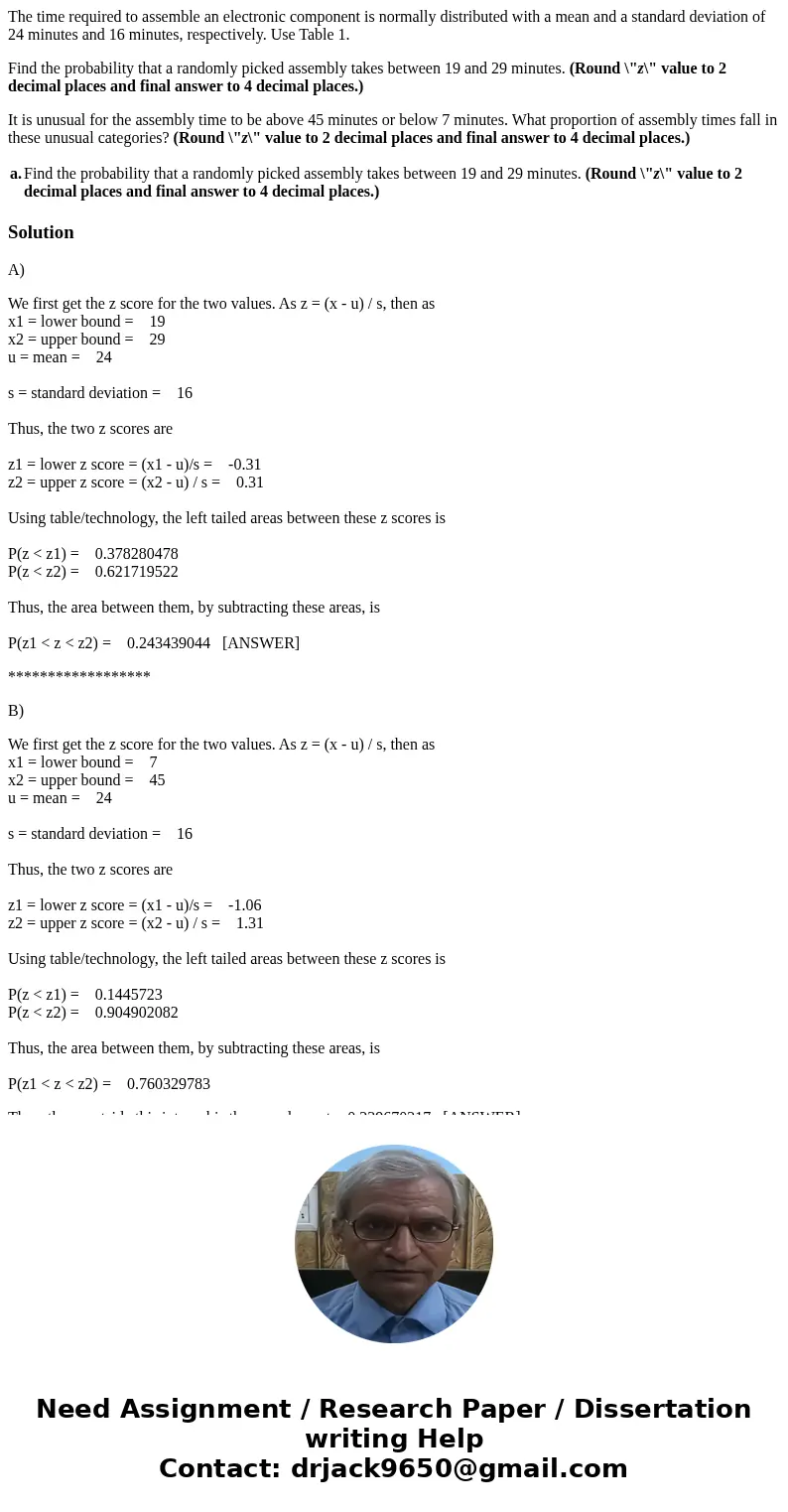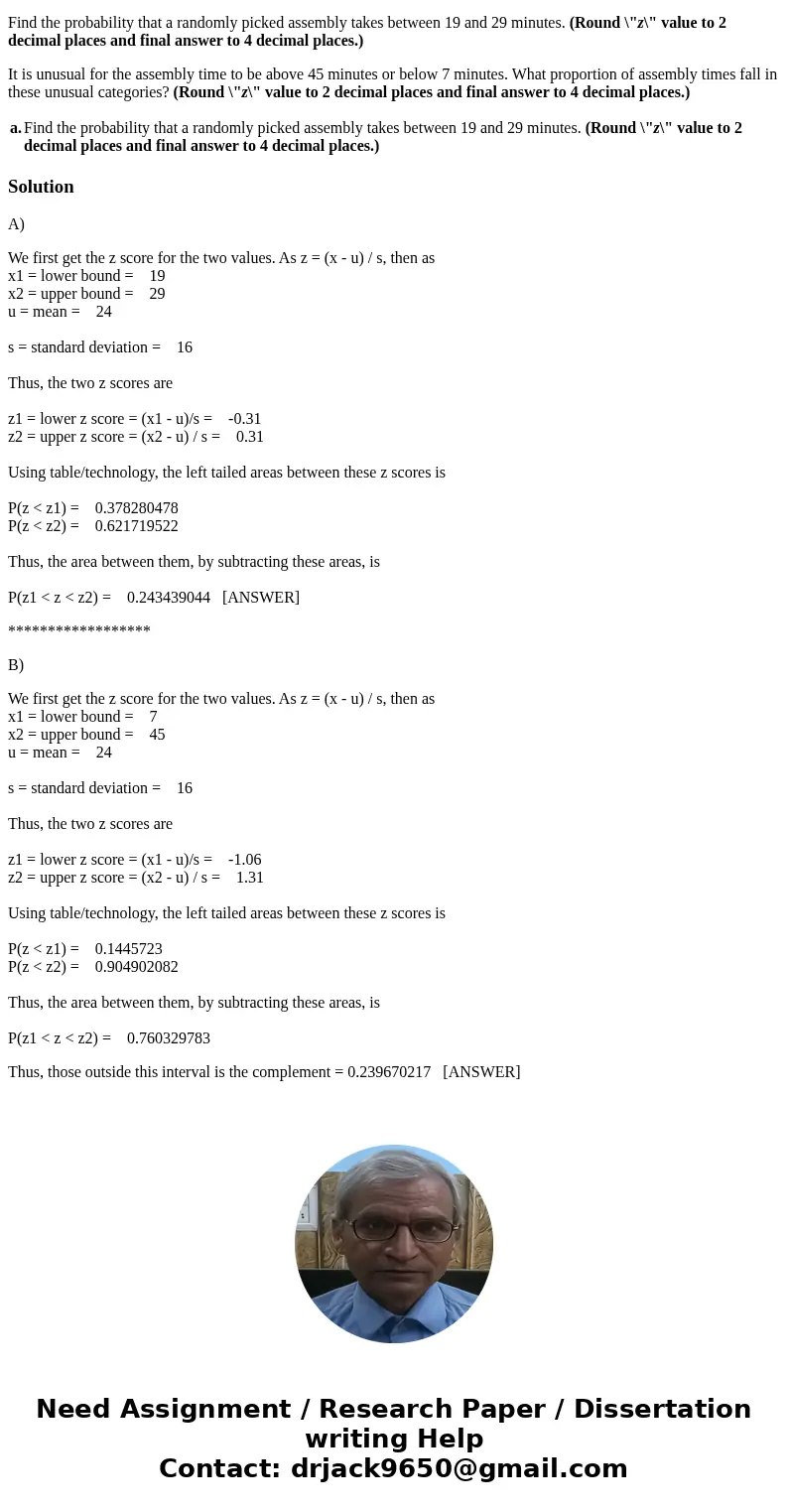The time required to assemble an electronic component is nor
The time required to assemble an electronic component is normally distributed with a mean and a standard deviation of 24 minutes and 16 minutes, respectively. Use Table 1.
Find the probability that a randomly picked assembly takes between 19 and 29 minutes. (Round \"z\" value to 2 decimal places and final answer to 4 decimal places.)
It is unusual for the assembly time to be above 45 minutes or below 7 minutes. What proportion of assembly times fall in these unusual categories? (Round \"z\" value to 2 decimal places and final answer to 4 decimal places.)
| a. | Find the probability that a randomly picked assembly takes between 19 and 29 minutes. (Round \"z\" value to 2 decimal places and final answer to 4 decimal places.) |
Solution
A)
We first get the z score for the two values. As z = (x - u) / s, then as
x1 = lower bound = 19
x2 = upper bound = 29
u = mean = 24
s = standard deviation = 16
Thus, the two z scores are
z1 = lower z score = (x1 - u)/s = -0.31
z2 = upper z score = (x2 - u) / s = 0.31
Using table/technology, the left tailed areas between these z scores is
P(z < z1) = 0.378280478
P(z < z2) = 0.621719522
Thus, the area between them, by subtracting these areas, is
P(z1 < z < z2) = 0.243439044 [ANSWER]
******************
B)
We first get the z score for the two values. As z = (x - u) / s, then as
x1 = lower bound = 7
x2 = upper bound = 45
u = mean = 24
s = standard deviation = 16
Thus, the two z scores are
z1 = lower z score = (x1 - u)/s = -1.06
z2 = upper z score = (x2 - u) / s = 1.31
Using table/technology, the left tailed areas between these z scores is
P(z < z1) = 0.1445723
P(z < z2) = 0.904902082
Thus, the area between them, by subtracting these areas, is
P(z1 < z < z2) = 0.760329783
Thus, those outside this interval is the complement = 0.239670217 [ANSWER]


 Homework Sourse
Homework Sourse